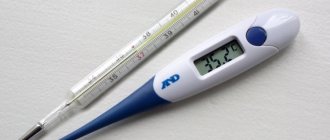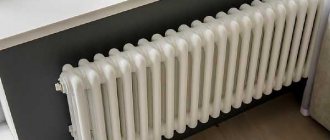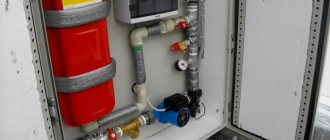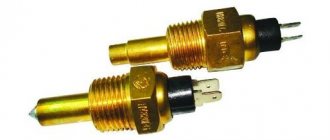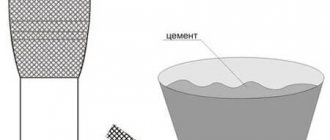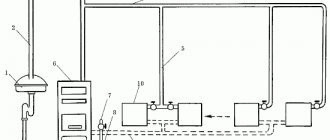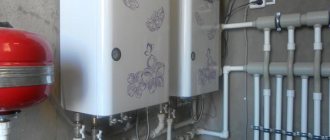Temperature standards
Of course, a lot depends on the preferences of the residents - some like it colder and are content with a low temperature of 18° C, others prefer cozy warmth and 24-25° C instead of thick sweaters and socks. But you need to know what temperature should be in our apartment according to legislation , since not only the health and well-being of the family, but also the budget depends on this.
The standard temperature in the apartment is contained in GOST R 51617-2000. Housing and communal services. General technical conditions". Here are the values needed to calculate the maximum power of heating devices. Staircases in residential buildings should have a temperature of 14-20 ° C. This is a space that residents use for a short time, no more than an hour, and are dressed in outerwear.
In inter-apartment corridors, as well as in lobbies, the temperature is 16-22 ° C. In hallways, living rooms and kitchens with gas or electric stoves, the temperature is 18-25 ° C. These rooms are intended for permanent residence (that is, more than 4 hours). The highest temperature is 24° C – valid for calculations in the bathroom. The norm is also regulated by Sanitary Rules and SanPiN.
Medical standards for temperature conditions in residential premises
A little about what the optimal temperature should be in a house according to medical recommendations. The norm in residential premises is 22° C. This temperature provides high thermal comfort with an air humidity of 30%. If the room temperature is higher, it can cause irritation of the respiratory tract, mucus, and increased susceptibility to bacteria and viruses in the nose and throat. The only exception is the bathroom, where water vapor rises and even higher temperatures do not pose a health risk.
When the child is at home, the temperature in the apartment should be raised by at least 1 degree, and in the bathroom or other room where he bathes, up to 28 degrees. In adult bedrooms, the temperature can be slightly cooler than in the living room - around 20° C. This indicator guarantees deeper sleep and, therefore, better rest.
What determines the optimal temperature of an apartment?
The temperature regimes that provide comfort to households depend on the climatic location of the home. In the southern regions and in the northern areas, as well as in western and eastern latitudes, the normal house temperature will be different.
As for countries, their climate is also different. And since the components of climate, in addition to temperature, are atmospheric pressure along with air humidity, the acceptable thermal range is set by them together.
For example, the humidity of the home’s atmosphere: the high humidity characteristic of hot countries requires higher values for the normal temperature of the home, because heat-intensive, moisture-saturated air actively takes away the heat of human bodies.
Temperature formation
The temperature inside a home changes due to the periodic change of seasons. Summer is always warmer than winter. In a temperate climate zone, the acceptable room temperature in the warm season will be +22...+25°C, in the cold season - +19...+22°C. Considering the duration of exposure, the seasonal temperature difference, although apparently small, still matters.
Placing split systems in the main rooms of the apartment will provide the necessary atmospheric parameters during the warm season. Household air conditioners are not capable of fully heating a home at low winter temperatures.
Finally, a comfortable temperature for a person in various rooms of an apartment is associated with his gender and age characteristics.
Let us note right away that personal preferences for one or another temperature regime do not mean health benefits. Excessive overheating, for example, refusal of air conditioning in hot weather, or hypothermia of a room due to a window open in cold weather, certainly harms the human body.
The maintained optimal air temperature in the room must correspond to the temperature needs of household members of different genders and ages. For example, for women, a comfortable home atmosphere will be 2-3°C higher than for men - women are more thermophilic.
Young children need a room with a stable temperature in the range of +20°C...+23°C. Temperature changes are especially difficult to tolerate for an infant, whose body is not yet capable of full (adult) thermoregulation.
For the room where the baby is located, it is extremely important to maintain a stable temperature level of +23°C...+24°C all year round, since a small child overheats and freezes much faster than adults.
Dangers of cold rooms
In medical terminology, hypothermia is called hypothermia - a condition that causes profound harm to the human body, contributing to the development of diseases of the nervous system and respiratory diseases.
In attempts to compensate for heat loss, the human body concentrates heat supply on the organs of the body and head. Therefore, warming the extremities is necessary.
Once in a cold atmosphere, our body strives to block hypothermia by using energy resources and sharply increasing heat transfer. This works when exposed to the cold for short periods of time.
However, with prolonged exposure to low temperatures, the body’s resources to compensate for heat loss are insufficient and the body cools below +36°C.
A characteristic sign of hypothermia is shivering, stimulated by the body in response to cold - excessive muscle activity produces heat. Hands and feet become cold because the blood vessels in them contract to reduce blood flow and reduce overall body cooling.
A decrease in body temperature below +35°C will cause a slowdown in the heart rate, breathing and weaken mental activity.
Hypothermia is especially dangerous for young children, whose bodies are physically smaller than adults and are not able to quickly produce heat. A child's body suffers from cold much more deeply than an adult.
Risks of excessively warm rooms
A hot room atmosphere creates ideal conditions for the development of pathogens that cause infectious diseases, primarily skin and intestinal diseases.
Being under a direct flow of conditioned air cooled below +22°C will result in thermal shock to the body. You cannot direct the air generated by the air conditioner towards yourself.
Hyperthermia has a detrimental effect on the human body, especially on the heart. In the hot microclimate of the room, a person sweats, which is why he loses a significant amount of moisture.
The blood thickens and becomes “heavy,” requiring the heart to work harder to pump it into the blood vessels. In case of cardiovascular diseases, such loads will be extremely heavy.
Dehydration, caused by the body's desire to balance external and internal temperatures, worsens the water and electrolyte balance of the human body and weakens the nervous system.
An overly warm bedroom atmosphere contributes to the development of insomnia by interfering with normal body thermoregulation. In a moderately cool microclimate, the body quickly moves into the deep phase of sleep, redistributing internal heat from the center of the body to the extremities.
Heat rate control
In order to maintain the above recommendations and to minimize heating costs, it is necessary to properly control heat standards, taking care of the thermal insulation of the house. Window and door frames need to be sealed. In the room, do not cover radiators, do not paint them with a thick layer of paint, and do not hang thick window curtains over them (heaters are usually installed under windows). Place furniture and equipment at a minimum distance of 1 meter from radiators.
It is recommended to regulate the temperature schedule of the heating system in individual rooms using manual or electronic thermostats. When installed even on an old heater, the electronic head can be adjusted to a temperature of up to 0.5 degrees, and program the heating output for a whole week, taking into account the time of day and the habits of local residents.
Modern thermostats will also adjust the heating output according to external conditions - warming or cooling outside, sunlight, etc. You don't need to turn off the heat completely, all you have to do is lower the temperature, for example by setting the economy mode to 15 ° C. Reducing the temperature by even 1 ° C increases heat savings by 5-7.5%.
How to measure the air temperature in an apartment?
It is not very easy to obtain objective figures for the measurements taken, but if you wish, you can be patient and eventually achieve a recalculation of the heat payment.
To measure the air temperature in a room correctly, you need to adhere to a number of rules:
1. Measurements are taken at an outside temperature no higher than -5°C.
2. Take measurements on a cloudy day. The rays of the sun, penetrating into the room through the window, additionally warm it up, and the readings on the device will not correspond to the actual picture.
3. Eliminate heat leakage through unsealed windows and cracks.
4. Measure temperature:
- in a private house - in two rooms of more than 5 sq.m., having 2 external walls or a large window (an area of 30% of all walls in the room);
- in an apartment building - measurements are taken on the first and last floors, in two rooms of more than 5 sq.m.
5. The measuring device should be located at a distance of at least half a meter from the outer wall and battery, at a height from the floor in rooms located mainly:
- in a sitting position - 10; 60 and 170 cm;
- standing or walking - 10; 110 and 170 cm.
Factors affecting temperature
The temperature readings in the apartment are influenced by many factors, primarily external. They fluctuate due to the following conditions:
- heating off;
- climatic features of the place;
- change of seasons;
- individual characteristics of individual apartments.
The heating temperature schedule also depends on the place where the property owners live. For example, in a northern latitude it will be different from a southern climate. The influence of factors such as atmospheric pressure and outdoor air humidity also affect the normal value of the heating system in any month.
When the seasons change, the microclimate in living rooms also varies. For example, in the winter months the temperature will be lower, and in the hot season it will be higher. When in the spring they stop supplying heat to the radiators, following the shutdown schedule, the temperature in the apartment also drops. For mid-latitudes, the optimal value in winter is about 22 degrees, and in summer – 25 degrees. Although at first glance the difference of three degrees is insignificant, it affects the well-being of everyone living in an apartment building or private building.
What determines the temperature in a living room?
The following factors influence the quantitative indicators of air temperature:
- specific coefficient of heat loss through the building envelope (how much heat is lost through the ceiling, walls, windows, floor);
- placement of an apartment in a building in height (on the first and last floors the temperature differences are more significant than on those in the middle);
- the presence of a large number of external walls (corner living space);
- quality and quantity of air exchange;
- temperature and speed of the coolant in the heating system;
- number and condition of heating system radiators.
Each of these factors can be influenced to achieve a favorable air temperature in the apartment.
Regulating the indoor climate
When heating outages occur, the temperature in the apartment must be controlled for the comfort of all citizens living in it. There are people who feel comfortable and well during the hot months; they do not require the installation of climate control equipment. Also, some people constantly ventilate their rooms during the winter cold. But all the requirements of the average person are reflected by the current standards for any heat supply company that has a central shutdown schedule for heating appliances. After all, hypothermia, like overheating, has a negative effect on human health.
Among other things, norms also depend on gender. Women require higher temperatures than men. You need to be extremely careful about the temperature conditions in the apartment where children live. They cannot yet regulate their temperature, so they are susceptible to overheating and freezing faster than adults. As a result, the thermal norm for them should be stable and be about 22 degrees.
In accordance with current sanitary standards, central temperature control systems must maintain values of no less than and no more than 22 degrees, and all deviations from this value have a bad effect on well-being.
To maintain normal temperature, certain conditions must be observed. Previously, the temperature was regulated using radiators, and in order to warm the room more, they used additional heat sources - various electric heaters, convectors, etc. To cool the room, they opened transoms and windows, thus solving the problem.
Today, scientific progress has made it possible to choose any climate control equipment that will provide comfortable conditions in apartments. For example, modern air conditioners not only cool air flows coming from the street, but are also equipped with a heating function. They also have dehumidification functions when the room is too humid, and purify the air from harmful compounds.
Current sanitary standards do not set the temperature of radiators. It is only important that the temperature in the home corresponds to certain indicators, which is influenced by differences in climatic conditions of the corresponding region. Indicators in the winter months should not be lower than 20 degrees. If this value is less, then the services of the heat supply organization are of poor quality.
In this case, property owners need:
- seek to eliminate poor performance in the provision of public services;
- demand from the manager] to recalculate payments [/anchor] when the heating is turned off unscheduled;
- carefully seal all cracks in windows and doors;
- buy additional equipment for heating the room;
- install autonomous heating appliances.
How to increase or decrease the temperature
According to GOST, the minimum indicator in an apartment should correspond to 15 degrees. With such a value, although life is quite difficult and uncomfortable, management companies believe that all standards are met. Because of this, the population independently regulates the temperature regime, and when cold weather sets in or mass heating outages occur, double-glazed windows are installed or the windows are sealed. At worst, they turn on electric heaters or convectors.
What to do when the constant temperature in the home reaches 28 degrees, which happens when the batteries are too hot. The highest value in the standard is 24 degrees, to which an error of 4 degrees is added. When thermostats are installed on the radiator, there are no questions, you just need to adjust it to the required number.
When there are no such devices on the battery, it is not very convenient to constantly open the windows due to drafts in the room. If there is a small child in the apartment, then such actions are not a way out of the situation; this is completely contraindicated for older people. To correct the situation you can:
- turn on the tap in front of the radiator;
- install an air recuperator.
When you close the ball valve in front of the battery, you will reduce the amount of hot water supplied. The recuperator will allow air flows to circulate correctly, and the air flow will enter the home already warmed up.
Optimal temperature during the heating season
It is clear from the above that the comfortable value in the apartment is set by SNIP at 20-22 degrees. Possible indicators are defined within the range of 18-26 degrees, in accordance with the purpose of the housing. Kitchens, living rooms and bathrooms have different standards. The errors correspond to 3 degrees of decrease and 4 degrees of increase in indicators. Unfortunately, according to current legislation, when it is 15 degrees above zero in an apartment, claims cannot be made against management companies. Also at a temperature of 30 degrees, when in winter the batteries heat up to their maximum. Here, as they say, if you want to live, know how to move around and contact the relevant authorities.
What is the real temperature in our apartments?
In theory, according to scientific calculations over many years, the temperature in our apartments should be at around 20-25 0 Celsius. From a medical point of view, it is generally accepted that each person has his own temperature threshold for comfort. Some people like it when the apartment is only +16-18 0 C, another likes it when the apartment is hot and the thermometer shows 23-25 0 C. In order to achieve a comfortable temperature regime inside the apartment, you need to take into account many factors, including how clean technical and technological, as well as social and everyday.
One of the aspects that has a decisive impact on temperature standards inside residential premises is the sick building syndrome. The poor condition of utilities, the unsatisfactory condition of technological premises and the main structural elements of the building can cause a decrease in the level of comfort in an apartment building.
The figure shows the effect achieved by insulating the external walls of a living space.
Important!
In order to make your home comfortable, to create a cozy microclimate inside each room, you need to take care of the normal operation of the heating system in the house and provide yourself with additional heating sources. In order to achieve maximum effect, you need to prepare your apartment accordingly for the onset of cold weather. External insulation of panels, insulation of window and door openings are measures that increase the thermal efficiency of an apartment by 20-25%.
If we talk about factors that influence the temperature in your home, you need to consider the following:
- climatic features of the area in which you live;
- the intensity of the seasons;
- age and personal preferences of apartment residents.
The normal temperature in a living room varies in each region of our country. For the northern regions, SanPiN (sanitary rules and regulations) are the same, for the middle zone and southern regions they are completely different. The climate is always different and this applies not only to air temperature, but also to the level of humidity in a given area and atmospheric pressure. For example, for more humid southern regions, temperature standards are higher.
The temperature in the apartment is influenced by seasonality. For the middle zone of our country, the optimal temperature in a living room in winter is 19-22 0 C, in summer – 22-25 0 C. Despite the fact that the difference does not seem significant, even small changes in temperature affect the condition of our body.
The main task of regulating temperature in residential premises is to create a comfort zone for the inhabitants of a city apartment. Human preferences do not always satisfy the correct, from a medical point of view, temperature regime. Overheated, dry air, as well as excessively cool air in a living room, can negatively affect our condition.
For those families with a small child, the temperature in the apartment in winter should be stable. The optimal temperature regime for any room in this situation is 20-23 0 C. In summer, these standards should be within the same limits. The main reason for this temperature balance is that young children, especially infants, do not naturally self-regulate their body temperature. The child either quickly overheats in a hot room, or quickly cools down in a cool room.
Important!
Large differences in temperature balance in different rooms should not be allowed.
The temperature standards in the apartment are established by the Rules for the provision of utility services, approved by Decree of the Government of the Russian Federation No. 354 of May 6, 2011.
On a note:
These standards set a lower temperature limit of +18 0 C, while not a word is said about the upper limit. We choose the upper level of acceptable temperature ourselves, focusing on our own preferences and feelings.
Responsibility of utilities for violations of standards
According to the law, tenants and homeowners have the right to apply for recalculation to management companies, which are obliged to reduce heating payments by 0.15 percent for each hour of violation of standards. If you do the math, for 28 days of improper provision of the service, the payment is reduced by up to 90 percent. Naturally, utility services themselves will not perform such a recalculation, so you will have to turn to the courts.
There are many cases where residents of apartment buildings have sued utility companies for money for services that were not fully provided or of poor quality. For example, three years ago, a Perm resident managed to recover 136 thousand rubles from the management company for violating their obligations to provide heat to the apartment. Therefore, you should defend your rights and contact regulatory authorities.
If the temperature in the apartment is below normal, what should you do?
If during the measurements a deviation from the norm was found to be smaller, it is necessary to notify the utility service or management company that services the apartment building. She sends an emergency team to draw up a measurement report. This is an official document containing a number of details, on the basis of which a decision is made to recalculate utility bills for services. It is drawn up in two copies, one of which remains in the hands of the tenant.
If there is a significant deviation from the norm, the management company is obliged to recalculate heating payments for the month in which these deviations were discovered.
The law establishes payment reduction figures - they amount to 0.15% per hour when a temperature deviation from the standard value is detected.
For example.
During the heating season, the air temperature in the corner room is fixed at 16 °C (the norm is +20 °C) 14 hours from the design period (it is 720 hours). After taking readings from an individual metering device, the thermal energy consumption for the past month amounted to 0.7 Gcal at a tariff of 1,900 rubles. 32 kopecks for 1 Gcal. Since the air temperature was below normal, the amount of payment for heating is reduced by 0.15% for each hour when it is recorded in the act.
Recalculation of utility bills for heating
- The fee for 14 hours when heating was provided of inadequate quality is reduced by: 0.15% x 14 hours = 2.1%.
- Standard payment for heat in the billing period (30 days or 720 hours): 0.8 Gcal multiplied by the tariff of 1,900 rubles. 32 kopecks total 1,520 rub. 25 kopecks
- As a result, after the reduction we get: 1,520 rubles. 25 kopecks x (100% - 2.1%) = 1,488 rubles. 32 kopecks
There are cases when patient residents measure their temperature for several days and during this period it constantly falls short of the norm. Then the fee reduction becomes significant. But not every management company is ready to unquestioningly recalculate the cost of heating services. Often, dissatisfied tenants can only defend their rights in court.

